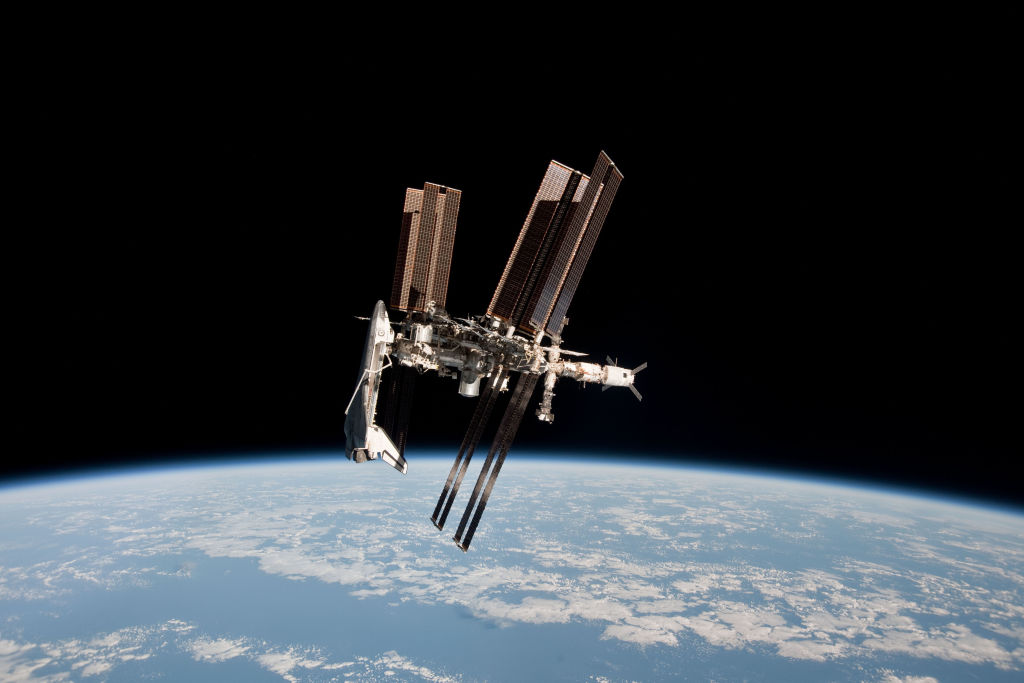While arms races and space tensions may sound like they belong in the 1960s, these are becoming prevalent issues today.
Particularly, a space arms race has China, the U.S. and Russia competing with each other and something akin to a shadow war in space has been heating up for the past several months.
One American general commented at last month’s Halifax International Security Forum that space threats are really growing.
“The threats are really growing and expanding every single day. And it’s really an evolution of activity that’s been happening for a long time … We’re really at a point now where there’s a whole host of ways that our space systems can be threatened,” General David Thompson, the Space Force’s first vice chief of space operations, told a Washinton Post columnist.
Some of these kinds of threats have been making headlines over the last several months, as Russia and China show off their space technology.
In November, Russia flexed its muscle and destroyed an old Soviet satellite with an anti-satellite missile, as the BBC reported. This became especially problematic when the debris from the destroyed satellite ended up in the orbit of the International Space Station. Russia was criticized by the U.S. and the UK for “dangerous and irresponsible” action that “shows a complete disregard for the security, safety and sustainability of space.”
China has also been showing off its space weapons technology.
This past summer, China tested a nuclear-capable hypersonic glide vehicle in space. They put it on a rocket, flew it through low-orbit space to circle the globe, and then struck within about two dozen miles of its target, as the Arms Control Association reported.
Thompson confirmed that Space Force is dealing with attacks on U.S. government satellites “every single day.” Fortunately, these are what he called “reversible attacks,” which means they aren’t permanently damaging the satellites — at least for now.
“Both China and Russia are regularly attacking U.S. satellites with non-kinetic means, including lasers, radio frequency jammers and cyber attacks, ” Thompson said, according to the Washington Post.
Russia and China have long been worried about the advancing American technology in space and weapons.
In 2020, Russian President Vladimir Putin even proposed that the leading space powers (Russia, U.S. and China) should agree to prohibit the “stationing” of weapons in space and the “threat or use of force” against any space objects, the RAND Corporation reported.
This kind of suggestion to avoid militarizing space is nothing new. Russia was making similar pitches back in the 1980s, when they wanted to have a conference to talk about banning the “testing and deployment of space strike weapons.”
“Both nations [Russia and China] share a common desire to curb the U.S. technological prowess in developing advanced space capabilities, especially those that might be applied to missile defense or anti-satellite operations,” RAND reported.
However, Russia and China are showing that they are catching up with their technology. The tests that have been happening are a signal to the U.S.
Even back in 2019, Russia began to show the U.S. that it was gaining the capability to threaten us in space when it deployed a satellite uncomfortably close to an American “national security satellite,” and then conducted a weapons test.
“It maneuvered close, it maneuvered dangerously, it maneuvered threateningly so that they were coming close enough that there was a concern of collision. So clearly, the Russians were sending us a message,” Thompson told the Post.
But he also pointed out that China is actually ahead of Russia.
“The Chinese are actually well ahead [of Russia]. They’re fielding operational systems at an incredible rate,” Thompson said.
So it turns out that former President Donald Trump’s establishment of the U.S. Space Force was actually rather insightful, since the space war is heating up.
At the time, many criticized Trump‘s establishment of the new military branch for being too expensive. The new branch required $15.4 billion for 2021, which came out of the Air Force’s budget, the Federal News Network reported.
But Trump deserves some credit for knowing that weaponization in space was going to become an increasing issue.
“Space is the world’s newest war-fighting domain. Amid grave threats to our national security, American superiority in space is absolutely vital. And we’re leading, but we’re not leading by enough. But very shortly we’ll be leading by a lot,” Trump said back in 2019, as NPR reported.
So, lucky for the U.S., our military is able to keep developing technology to counter any Russian and Chinese space threats.
“We are still the best in the world, clearly in terms of capability. They’re catching up quickly,” Thompson told the Post. “We should be concerned by the end of this decade if we don’t adapt.”
This article appeared originally on The Western Journal.

























 Continue with Google
Continue with Google